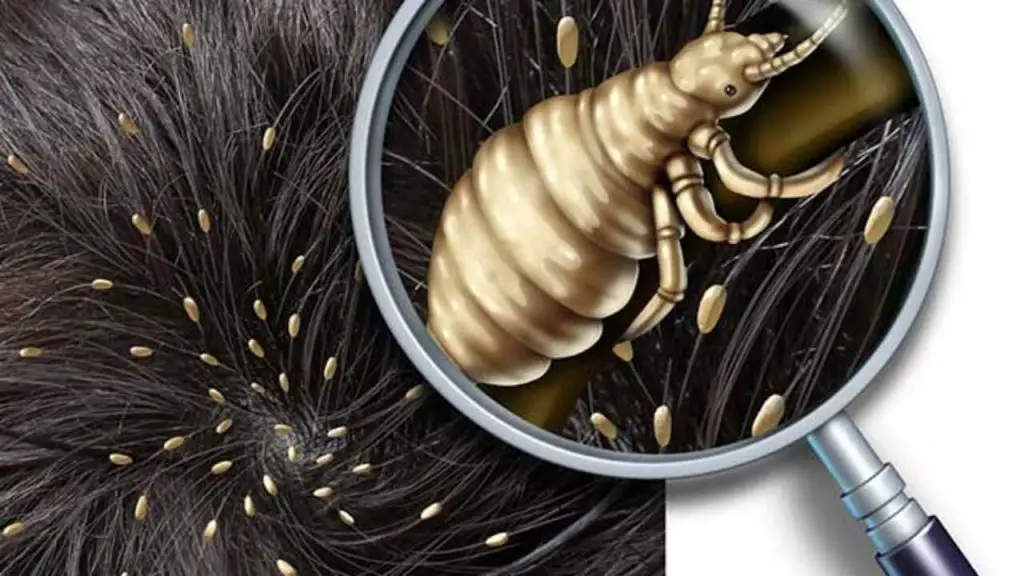Head lice are tiny insects that infest the scalp and hair. They spread easily through direct contact and can cause intense itching and discomfort.
If left untreated, head lice can lead to a range of complications and may affect not only your physical health but also your emotional well-being.
The most common symptom of head lice is itching, particularly behind the ears and at the nape of the neck.
You may also notice small red bumps or sores on the scalp, as well as the presence of lice eggs (nits) attached to the hair shafts. In severe cases, head lice can even lead to hair loss and secondary infections.
Head lice are highly contagious and can be easily transmitted from person to person, especially in crowded places such as schools or daycare centers.
Sharing personal items like combs, brushes, hats, or headphones can also spread the infestation.
It’s important to understand the causes and risk factors associated with head lice to prevent further complications.
What Happens If You Have Head Lice for Too Long [The Dangers]
If head lice are left untreated for too long, they can cause a range of problems and complications. Here are some of the dangers associated with untreated head lice:
1. Extreme Itchiness and Rashes:
One of the most common and bothersome symptoms of head lice infestation is intense itching. When lice bite into the scalp to feed on blood, they inject saliva, which triggers an allergic reaction.
This allergic reaction can result in an itchy scalp, often leading to constant scratching. Over time, excessive scratching can cause abrasions on the skin, leading to rashes and open sores that are prone to infection.
2. Bacterial Infections:
When the skin is repeatedly scratched due to the presence of head lice, it becomes more susceptible to bacterial infections.
The constant itching and broken skin provide a favorable environment for bacteria to enter and multiply. This can result in various infections.
– Cellulitis: Cellulitis is a bacterial infection that affects the deep layers of the skin. It causes redness, warmth, tenderness, and swelling in the affected area.
If left untreated, cellulitis can spread and potentially lead to more serious health problems.
– Impetigo: Impetigo is a highly contagious bacterial skin infection that is commonly caused by scratching open sores.
It leads to the formation of red sores that can ooze and crust over. If left untreated, impetigo can spread to other parts of the body and even to other people.
3. Spreading Head Lice to Other People:
Another significant risk of leaving head lice untreated is the potential to spread them to other individuals.
Head lice can easily transfer from one person to another through direct contact or by sharing personal items such as hats, brushes, or pillows.
Failing to treat head lice promptly increases the chances of infecting others, including family members, classmates, or friends.
4. Hair Loss:
Prolonged infestation of head lice can lead to hair loss. Continuous scratching and irritation can weaken the hair follicles and cause hair to break or fall out.
In severe cases, the constant pulling and tugging at the hair can lead to bald spots or thinning hair.
5. Difficulty Sleeping and Concentrating:
Persistent itching caused by head lice can disrupt sleep patterns, making it difficult to get a good night’s rest.
Lack of sleep can lead to fatigue, irritability, and difficulty concentrating, particularly in children who are already dealing with the stress and discomfort of head lice.
Do Lice Need to Mate to Lay Eggs?

No, lice do not need to mate in order to lay eggs. Lice are capable of reproducing through a process known as parthenogenesis, which means they can lay eggs without the need for fertilization by a male louse.
Female lice can lay eggs, or nits, on the hair shafts close to the scalp. These eggs are attached using a glue-like substance and hatch within about 7 to 10 days. The nymphs that emerge from the eggs then go through several molts before maturing into adult lice capable of laying their own eggs.
It is important to note that while lice can reproduce without mating, having multiple lice infesting the hair can increase the rate of egg production and the likelihood of infestation spreading.
Tips to Prevent Head Lice
Preventing head lice infestations can be challenging, especially in settings where close contact among individuals is common, such as schools or daycare centers.
However, following these tips can help reduce the risk of getting head lice:
1. Avoid head-to-head contact:
Lice primarily spread through direct head-to-head contact. Encourage children to avoid activities where their heads may come in contact with others, such as sharing hats, brushes, or headphones.
2. Tie up or braid hair:
Keeping hair tied up or braided can make it more difficult for lice to move from one person to another. Consider using hair accessories, such as bobby pins or hairbands, to secure loose strands.
3. Avoid sharing personal items:
Lice can crawl from one item to another, so it’s best to avoid sharing personal items that come into contact with the head, such as hats, scarves, combs, brushes, or pillows.
4. Regularly check for lice:
Perform routine checks on yourself and your family members to detect lice early on. Look for live lice crawling on the scalp, as well as nits (lice eggs) attached to the hair shafts close to the scalp.
5. Educate children about lice:
Teach children about the importance of not sharing personal items, avoiding head-to-head contact, and recognizing the signs of lice.
By empowering them with knowledge, they can actively participate in preventing lice infestations.
6. Consider using preventive products:
There are products available, such as lice-repellent sprays or shampoos, that claim to help prevent lice infestations.
While their effectiveness may vary, using these products in high-risk environments may provide an added layer of protection.
7. Launder or store infested items properly:
If you discover lice or nits on personal items, wash them in hot water (130°F or higher) and dry them on high heat for at least 20 minutes.
For non-washable items, seal them in a plastic bag and leave them untouched for two weeks to suffocate any lice or nits.
Remember that despite taking preventive measures, lice infestations can still occur. If you suspect an infestation, consult a healthcare professional for appropriate treatment options.
FAQ’s
Do lice eventually die off?
Yes, lice do eventually die off if they are not able to find a suitable host for an extended period of time. Head lice rely on human blood for their survival, and without access to a human scalp to feed on, adult lice typically die within 1-2 days.
Nymphs, which are immature lice, have a slightly shorter lifespan of around 24-48 hours. Lice eggs, or nits, also have a limited lifespan once they are laid.
If the eggs are not able to hatch within a specific temperature range and attach to a human hair shaft within 7-10 days, they are unlikely to survive.
However, it’s important to note that lice are highly contagious and can spread easily from person to person, so if there are individuals with an active infestation nearby, the risk of re-infestation remains.
Therefore, proper treatment and prevention measures are essential to completely eradicate head lice.
Can untreated head lice affect your health?
Untreated head lice can indeed affect your health. Head lice are tiny insects that infest the scalp and feed on blood from the scalp.
The bites from these lice can cause intense itching and irritation, leading to scratching and potential skin infections. In severe cases, excessive scratching can result in open sores on the scalp, which can become infected and lead to further complications.
Additionally, the constant presence of head lice can cause emotional distress, social stigma, and disruption in daily activities. Therefore, it is crucial to address head lice infestations promptly to protect your health and well-being.
Is there a treatment recommendation for certain age groups?
Treatment recommendations can vary depending on the age group of individuals. Different age groups may have different physiological, psychological, and developmental needs, which can influence the type of treatment that is recommended.
For example, children may require specialized pediatric treatments that take into account their growth and development, while older adults may benefit from treatments that address age-related health concerns.
It is important for healthcare professionals to consider the specific needs of different age groups when making treatment recommendations to ensure the best possible outcomes for patients.
Additional Posts:



